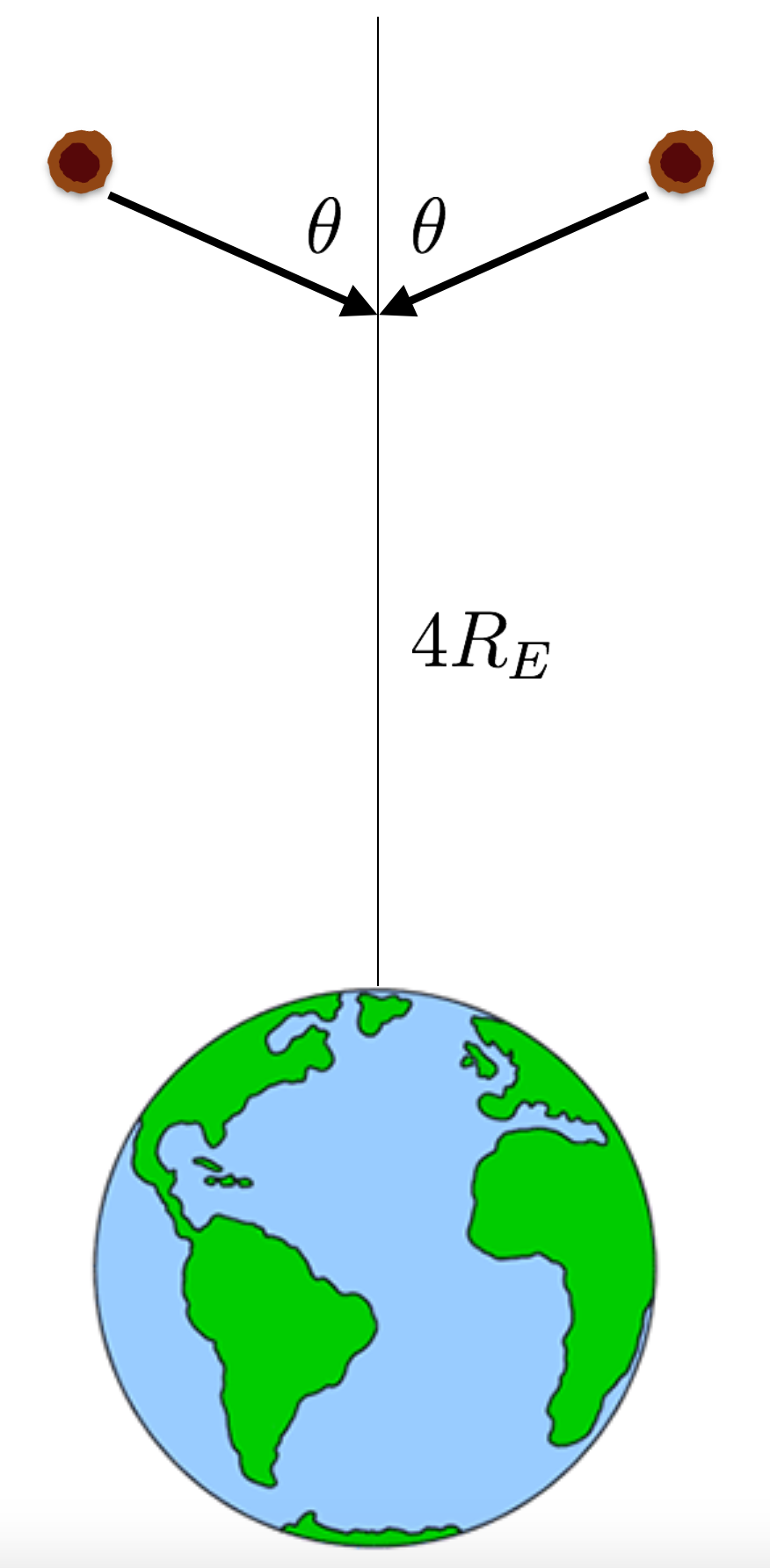Feel the Gravity
Two balls of mud are hurtling above the Earth, as shown below.

The balls collide at a height of from the surface of the Earth, stick together, and start to fall straight down toward the Earth. Find the time (in seconds) it takes for the composite mudball to reach the surface of the Earth.
Details and Assumptions:
- The mud balls move with speed just before collision.
- The radius of the Earth is
- The mass of the Earth is
- Ignore the effect of wind resistance. -This problem is Original ! :)
The answer is 9025.72.
This section requires Javascript.
You are seeing this because something didn't load right. We suggest you, (a) try
refreshing the page, (b) enabling javascript if it is disabled on your browser and,
finally, (c)
loading the
non-javascript version of this page
. We're sorry about the hassle.
According to law of conservation of momentum,
m × 2 5 6 + m × 2 5 6 = 2 m v
v = 2 5 6
Now using law of conservation of energy at height x is
5 R − 2 G M m + 2 1 × 2 m × ( 2 5 6 ) 2 = x − 2 G M m + 2 1 2 m v 2
Now v = d t d x
5 R − 2 G M + 2 1 × 2 × ( 2 5 6 ) 2 + x − 2 G M = 2 1 2 ( d t d x ) 2
5 R − 2 G M + 2 1 × 2 × ( 2 5 6 ) 2 + x − 2 G M = d t d x